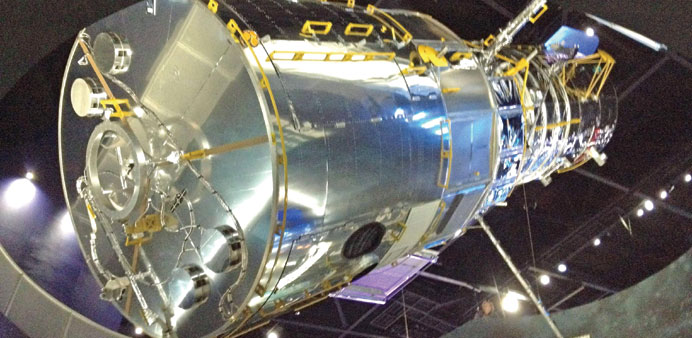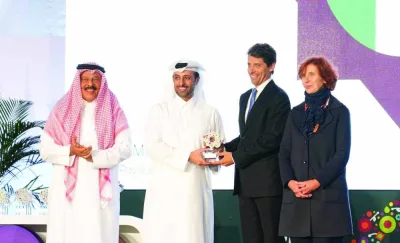By Scott Dance/The Baltimore Sun/TNS
The Hubble Space Telescope survived decades of delays, glitches and blunders to fulfil predictions that it would rewrite science textbooks. But as it moves into the final years of its life, scientists say some of its best work still could be ahead of it.
Hubble’s past and future discoveries will guide the new James Webb Space Telescope, scheduled to launch in 2018, as the next-generation observatory focuses more closely on the Big Bang and helps paint a fuller picture of the properties of distant planets and galaxies.
As Hubble marks the silver anniversary of its April 24, 1990, launch, scientists are celebrating what has been a turbulent yet rewarding history, answering long-held questions about the age and expansion of the universe. But they also expect a bright future with more surprise discoveries as they peer into the cosmos in new ways.
“The combination of these two observatories will be very powerful scientifically,” said Ken Sembach, head of the Hubble mission at Baltimore’s Space Telescope Science Institute. “They’ll be able to follow up on each other’s discoveries.”
The Hubble mission got off to a rocky start. Originally planned to launch in 1983, it was delayed first by hiccups in its assembly and then by the space shuttle Challenger’s explosion in 1986. Once it got into space in 1990, all was still not well - a major error in construction of the telescope’s primary mirror meant images came back to Earth blurry.
The mistake nearly cost scientists future discoveries, inviting “withering criticism” from federal lawmakers wary of a repair mission that would end up adding more than $1bn to a price tag that was already up to nearly $5bn through the launch. Maryland Sen. Barbara A Mikulski, who served as chairwoman of the subcommittee that provided Nasa with funding and oversight, was among those who pushed for a fix.
“Nasa’s credibility was hanging in the balance,” said Kevin Kelly, chief clerk of the subcommittee, who worked closely with Mikulski. “Had they not fixed this, I would say with much of what they’ve accomplished and done over the last 20 years, they wouldn’t have gotten very far.”
Since the 1993 mission to repair Hubble’s eye, the orbiting telescope has delivered on its promise, shedding new light on how planets form and corroborating the theory behind black holes.
With Hubble, astronomers used measurements of the distance to 18 galaxies to calculate the rate at which the universe is expanding, dubbed the Hubble constant, also named in honour of the astronomer Edwin P. Hubble. From that, they learned that the Big Bang occurred about 13.8bn years ago.
In recent years, astronomers shifted their focus farther in space, using new instruments to stretch the telescope’s view to just 500mn years after the Big Bang. The telescope’s cumulative cost is estimated at more than $10bn.
There are more ideas for ways to use Hubble than time to do them. The latest call for proposals for what the telescope should observe next drew 1,100 applications, only about a fifth of which will go forward, said Padi Boyd, the telescope’s deputy project scientist for operations at Nasa Goddard Space Flight Center in Greenbelt, Md., which also manages the telescope.
But Hubble is up for the challenge, she said. After so many years circling 340 miles above Earth at a speed of five miles each second, Hubble is at what she called “the peak of its capability.” The telescope underwent five servicing missions, starting with the critical repair in 1993 and ending with a final makeover in 2009 that added two key new instruments and fixed two others.

A replica of the Hubble Space Telescope on show at Kennedy Space Center Visitors Centre.


